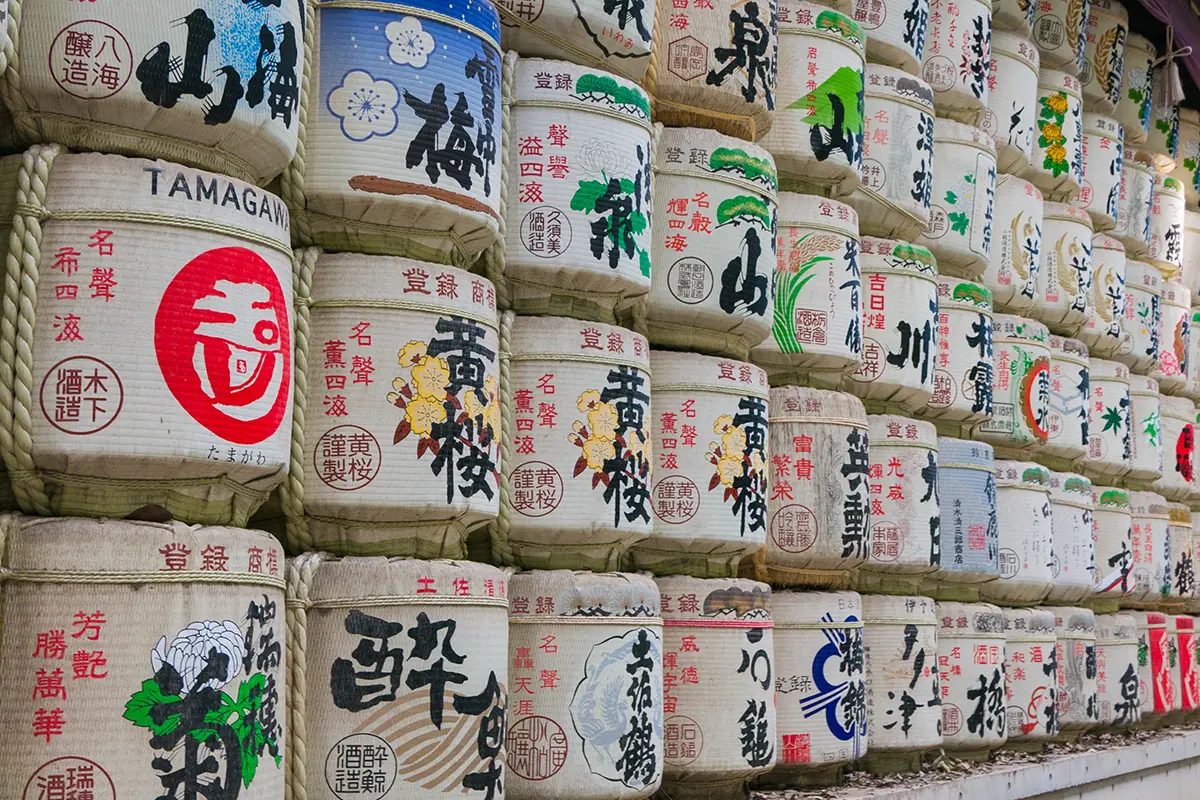
We’ve always loved pairing sake with Japanese meals, but until recently, we couldn’t really tell the difference between the types or understand how the brewing processes impacted the flavors. This curiosity led us to enroll in the Sake Professional Course during the summer of 2017. The three-day course was held at the University of Denver, led by the renowned Mr. John Gauntner. Over those days, we delved into the history and production of sake, explored various brewing methods, learned about regional differences, and tasted a wide array of flavors. By the end of the course, we felt far more adept at choosing the right sake to complement our meals and moods.
First off, it’s important to note that in Japan, the term “sake” refers to all alcoholic drinks. The specific beverage known internationally as sake is called “nihonshu” (日本酒) in Japan. Nihonshu has been brewed in Japan for about 2,000 years, primarily from four basic ingredients: rice, yeast, water, and koji. If you ever find yourself in Japan, seize the opportunity to sample various nihonshu—less than 10% of it is exported, so Japan truly offers the richest learning and tasting experiences.
One fundamental type we explored was Junmai, which translates to “pure rice.” This label means the nihonshu is brewed without any added alcohol from sources other than rice. Purely made from rice, water, koji, and yeast, Junmai offers a rich, robust flavor that we’ve grown quite fond of.
Other categories, such as Daiginjo, Ginjo, and Honjozo, differentiate themselves by the degree of rice polishing before brewing. The core of the rice grain holds the sweetness, so the more the rice is polished, the finer (and often pricier) the nihonshu. For example, Honjozo uses rice polished down to 70% of its original size. Ginjo goes even further, to 60% or less, and Daiginjo is made from rice polished down to at least 50%.
Although Daiginjo is often celebrated as the top of nihonshu, with its highly refined brewing process, we enjoy all three types—Daiginjo, Ginjo, and Honjozo—depending on the meal we’re having. Each type brings its unique characteristics to the table, enhancing different dishes with their distinct flavors. Whether it’s a light and fragrant Daiginjo to accompany a delicate sashimi platter, a slightly less polished but wonderfully aromatic Ginjo with grilled fish, or a robust Honjozo to balance out richer, savory dishes, we select our nihonshu to complement and elevate our culinary experience. This flexibility in our nihonshu choices allows us to fully appreciate the diversity and depth of flavors that nihonshu has to offer.
Each region in Japan brings its unique twist to nihonshu brewing, influenced by the local climate, water quality, and rice varieties. On our travels, we’ve been particularly taken with the regional nihonshu. In Kyoto, for example, we visited Fushimi, where the softer water yields a notably delicate and smooth nihonshu. Over in the Nada district of Hyogo, which produces the most nihonshu in Japan, the flavors are bold and commanding, reflecting the local character and brewing pride. Find nihonshu brewers in your destination and try their nihonshu!
We’ve discovered that the most effective way to truly understand and appreciate nihonshu is by immersing ourselves in its diverse flavors through tastings. We’ve explored numerous stores across Japan, each offering a unique experience with their expertly curated selections and insightful recommendations. Here are some of the standout locations where our nihonshu adventures have been particularly memorable:
In addition to these stores, we’ve enjoyed discovering new favorites at various izakaya known for their extensive nihonshu selections:
For anyone interested in diving deeper into the world of nihonshu, the Japan Sake and Shochu Makers Association in Shinbashi is an invaluable resource. They offer workshops and events year-round that are perfect for both newcomers and seasoned enthusiasts alike.
Mr. John Gauntner has truly been our nihonshu sensei. A renowned expert, John not only holds the Sake Professional Course multiple times throughout the year, but also serves as a distinguished judge at various nihonshu competitions across Japan. His deep knowledge and passion for nihonshu make his teachings exceptionally insightful. To stay updated on all things nihonshu, we’ve subscribed to his newsletter, which is a treasure trove of information. You can access it too, and dive into the world of nihonshu, by visiting his website at Sake World.
John Gauntner’s book, Sake Confidential, is another fantastic resource that can deepen your understanding of nihonshu. This insightful guide offers an insider’s look into the often complex world of nihonshu, providing clear explanations and expert advice. Whether you’re a novice or a seasoned enthusiast, this book will enhance your knowledge and appreciation for this unique beverage, adding an extra layer of enjoyment to your nihonshu experience.
Nihonshu has become more than just a drink for us; it’s a sophisticated world of its own, rich with history, culture, and an array of flavors waiting to be explored. Our journey through the world of nihonshu has been both enlightening and immensely enjoyable, transforming every sip into an experience of its own.
Contact us at [email protected], or click here to use our contact form.
Submission successful. You will receive a confirmation email, shortly.